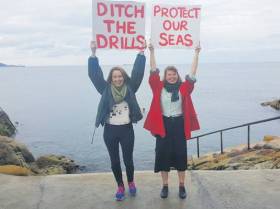Displaying items by tag: Kish Bank Oil Prospect
#DublinBayOil - The Dublin Bay suburb of Sandycove writes Dublin Gazette could be affected by offshore oil drilling that would damage local “delicate habitats”, according to local Green Party reps.
Una Power, Green Party Representative for Killiney-Shankill is calling on the government to cease further exploration for fossil fuels off the coast of Dun Laoghaire.
Oil exploration is set to start at Kish Bank, just 10km from Killiney Beach.
“This must be stopped,” Ms Power told the Dublin Gazette.
Providence Resources Plc, the Irish-based Oil and Gas Exploration Company, holds a licence (details click link) and (related PDF download), granted by the Department of Communications, Climate Action and Environment to allow for the planning, consent and drilling of an exploration well on the Kish Prospect.
Ms Power said that it is “incredibly worrying that the Government are continuing to grant licenses to explore for fossil fuels, knowing the challenges Ireland faces in meeting our climate change targets, and the negative environmental and health impacts fossil fuels have”.
“We’re calling on the Government to stop the granting of licenses. Oil exploration is set to start at Kish Bank, just 10km from Killiney Beach – this must be stopped.”
The Green Party introduced the Prohibition of Fossil Fuels (Keep It In the Ground) Bill 2017 last week, which seeks an end to further oil and gas exploration in Irish territory as the COP23 conference in Bonn continues.
Afloat adds on the Providence Resources website they state, in February 2013 the company decided to voluntarily surrender the Foreshore Licence following discussions with the Irish government, when it became clear that there had been a transposition error in relation to the EIA Directive. In 2014, the transposition error was finally corrected.
The surrendered Foreshore Licence as previously covered on Afloat, followed the controversial oil project also known as the 'Dalkey Island Prospect' given the close proximity of the Kish Bank Prospect.
To read more on the story from the Dublin Gazette, click here.























